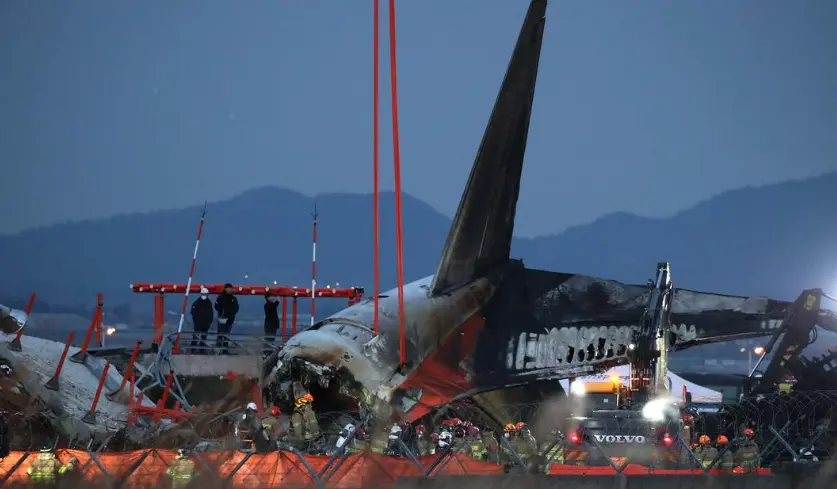On December 28, 2024, a catastrophic aviation disaster struck South Korea when Jeju Air Flight 7C 2216 crash-landed at Muan International Airport, resulting in the tragic loss of 179 lives. The flight, originating from Bangkok, was carrying 175 passengers and six crew members. Upon landing, the aircraft veered off the runway and burst into flames, leading to one of the deadliest aviation incidents in recent South Korean history.
Incident Overview and Global Impact
The ill-fated Jeju Air Flight 7C 2216 was on its final approach to Muan International Airport when it encountered difficulties that caused it to veer off the runway. The aircraft collided with a barrier, leading to a catastrophic fire that engulfed the plane. Despite prompt response from emergency services, 179 individuals perished in the disaster, including 85 women, 84 men, and 10 others whose genders were not immediately identifiable.
This tragedy has sent shockwaves through the global aviation community, prompting immediate reviews of safety protocols and emergency response procedures. The incident underscores the critical importance of stringent safety measures and has led to calls for comprehensive investigations to prevent such disasters in the future.
Aircraft Type, Flight Path, and Weather Conditions
Jeju Air Flight 7C 2216 was operated using a Boeing 737 aircraft, a model renowned for its reliability and widespread use in commercial aviation. The flight departed from Bangkok’s Suvarnabhumi Airport, following a standard flight path to Muan International Airport in South Korea.

Preliminary reports indicate that weather conditions at the time of the landing were within acceptable parameters, with no significant adverse weather reported. However, air traffic controllers had issued warnings about potential bird activity in the vicinity of the airport, which may have played a role in the incident.
Accounts from Survivors and First Responders
Miraculously, two crew members survived the crash and have provided harrowing accounts of the events leading up to the disaster. Their testimonies suggest that the aircraft experienced sudden difficulties during landing, resulting in the deviation from the runway and subsequent collision. First responders described a chaotic scene upon arrival, with intense flames and thick smoke hampering rescue efforts. Despite their valiant attempts, the rapid spread of the fire made it impossible to save more lives.
Also Read: Tragic South Korea Plane Crash Claims 179 Lives
South Korean Authorities’ Actions
In the wake of the disaster, South Korean authorities have launched a comprehensive investigation to determine the exact cause of the crash. The Ministry of Land, Infrastructure, and Transport is leading the inquiry, with assistance from international aviation experts and Boeing representatives. Authorities have also grounded similar aircraft in Jeju Air’s fleet pending thorough safety inspections. Additionally, support services have been established for the families of the victims, including counseling and financial assistance.
Global Impact on Aviation Safety Protocols
This tragic incident has prompted a global reassessment of aviation safety protocols. Airlines and regulatory bodies worldwide are reviewing landing procedures, emergency response readiness, and aircraft maintenance practices. The International Civil Aviation Organization (ICAO) has called for an urgent meeting to discuss potential safety enhancements, emphasizing the need for improved communication between pilots and air traffic controllers, especially concerning wildlife hazards near airports.



